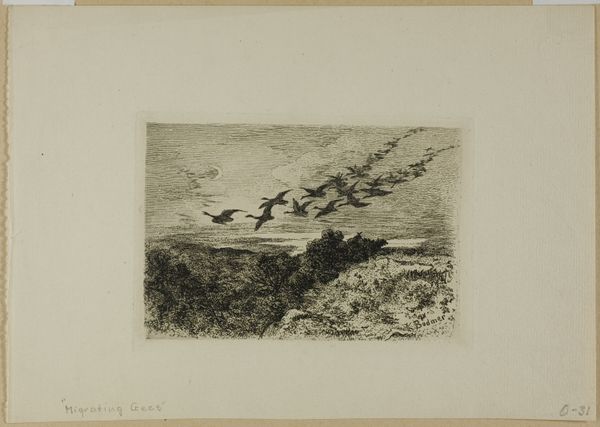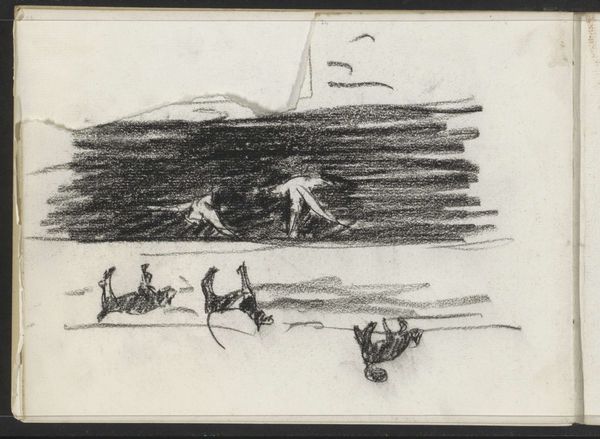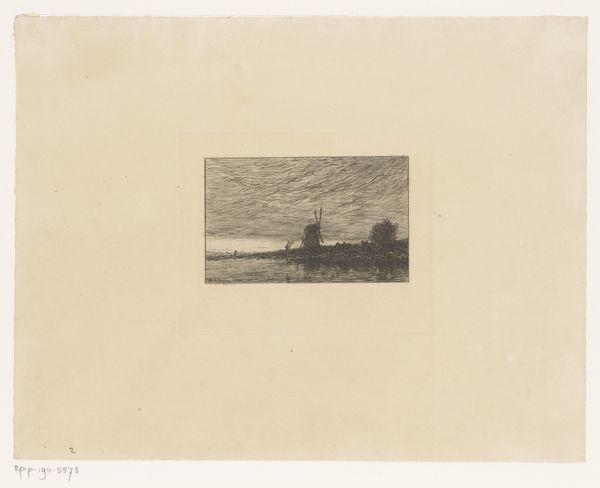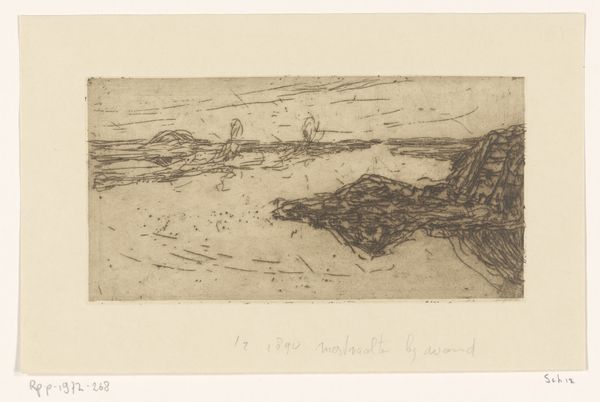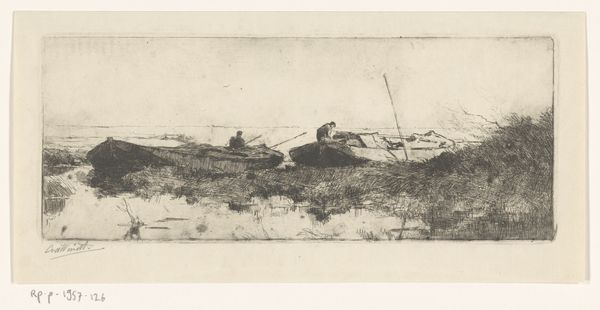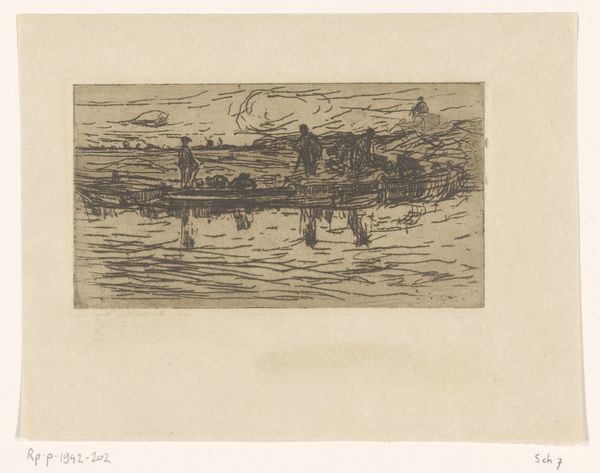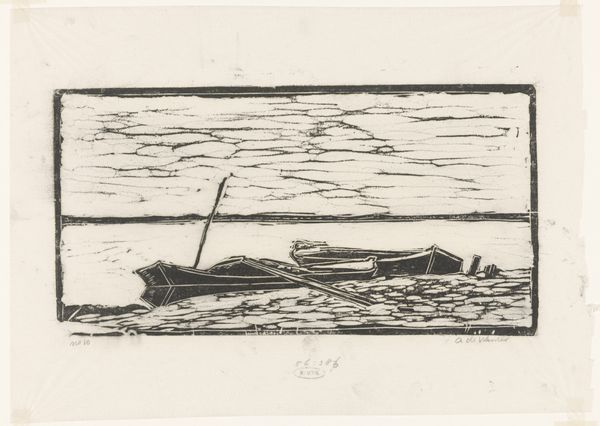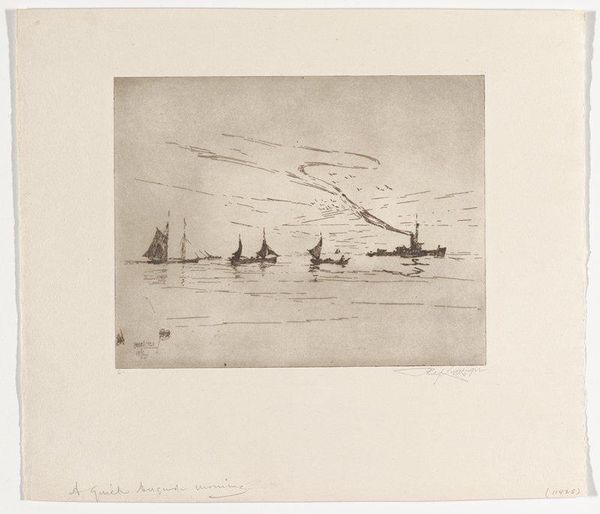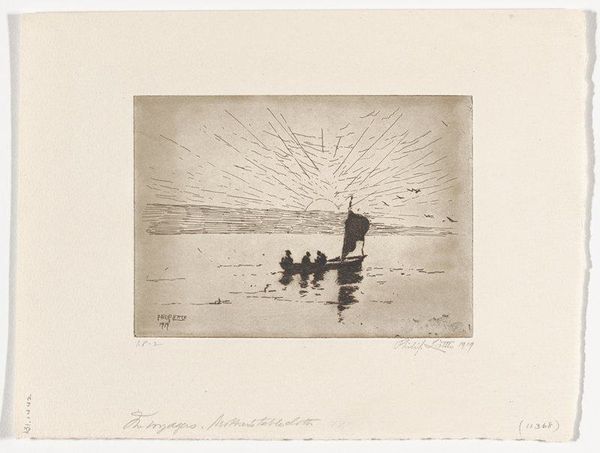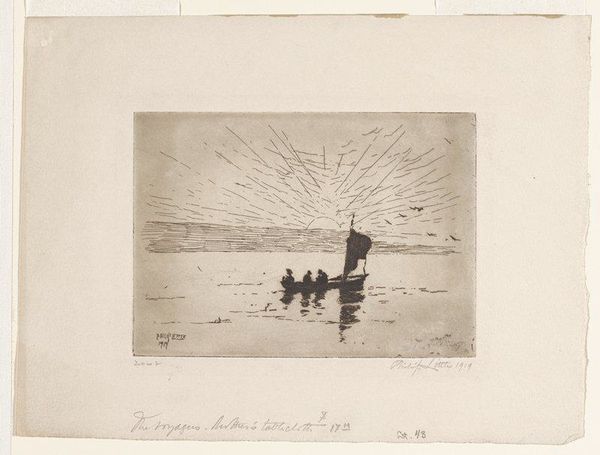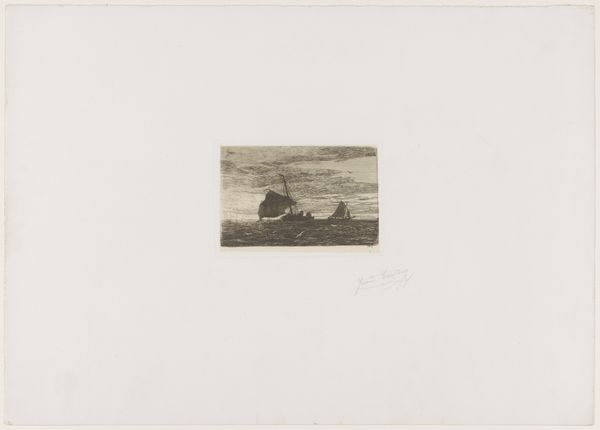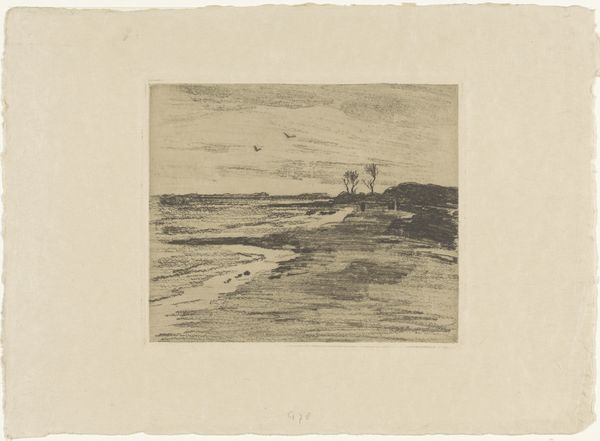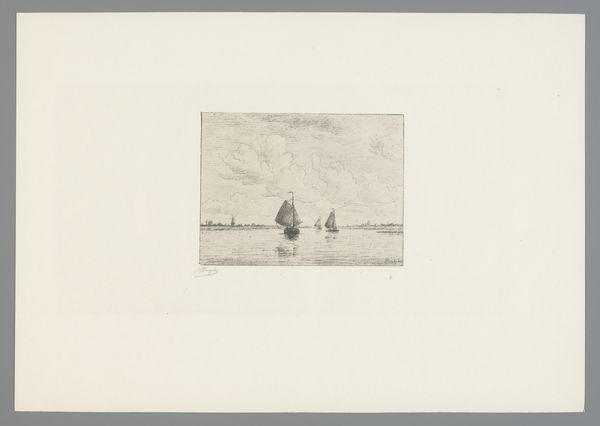
print, etching
#
narrative-art
# print
#
etching
#
landscape
#
realism
Dimensions: 9 7/8 x 11 3/4 in. (25.08 x 29.85 cm) (plate)14 1/8 x 14 3/16 in. (35.88 x 36.04 cm) (sheet)
Copyright: No Copyright - United States
Curator: Here we have Philip Little’s “Hauling the Seine,” an etching from 1921, currently residing here at the Minneapolis Institute of Art. Editor: My first thought is how somber and subdued this scene appears. The tonality really lends a certain gravity to the physical exertion of fishing. Curator: It's evocative of a working-class portrayal during the early 20th century, an era deeply influenced by labor movements and agrarian reforms. Consider how artists like Millet romanticized peasant labor; Little appears to do something similar. What do you make of the technique? Editor: Well, you can clearly see the etching process at work in those delicate yet distinct lines, it really suits the portrayal of manual labor. The rough strokes feel deliberate, mirroring the arduous nature of pulling those heavy nets. Curator: The print medium allowed for wider distribution, thus influencing public opinion about labor rights. It makes one wonder how effective this form of art was in highlighting the everyday struggles and stories, doesn't it? Editor: Definitely. But let’s think also about access—the raw materials like the paper and inks, who controlled them? Even something seemingly simple carries layers of economic meaning tied to consumption and access. This artwork, both the fishing operation it shows and its own existence, depends on intricate systems of production and labor. Curator: Absolutely. There's something profound in the ordinariness represented here, elevating it beyond just a landscape or a genre piece. It allows a critical gaze at how labor has shaped and supported cultural landscapes across multiple eras. Editor: And it pushes us to think: Who are these workers? Are they properly compensated? Are their tools durable, and made ethically? Are they fishing sustainably? Art that speaks to process can generate many pertinent social questions. Curator: I’m leaving with a richer appreciation of Little’s work and also your interpretation, emphasizing materiality, social structure and production ethics. Editor: Precisely. Examining an artwork means delving deeper into how it functions as part of our world and is tied to systems of making, trading, and believing.
Comments
No comments
Be the first to comment and join the conversation on the ultimate creative platform.
